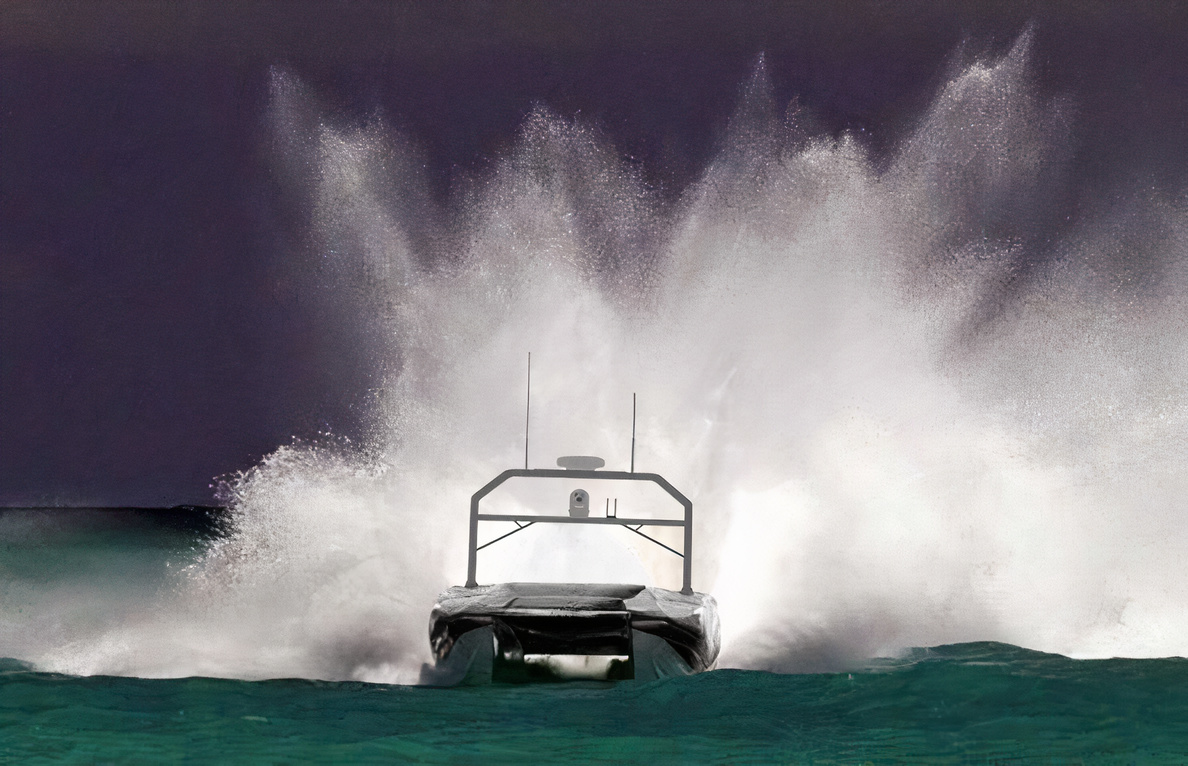Unmanned Surface Vessels: The Catamaran Advantage
There is little question that maritime autonomous systems have a key place in the evolution of distributed maritime concepts of operations. Each type of platform has its place, its advantages, and its limits.
But one consideration is where does one fit in the design, construction, and utility of different form factors of these systems when looking at the way ahead for fleet operations?
One aspect of this challenge is considering the relationship of platform design in these various classes of systems within the broader experience navies have had in building and operating larger sea going vessels. How are these new systems different?
For example, how should they be considered within the overall build approach of the U.S. Navy?
This issue came to my attention when talking with a recently retired USMC general when we were discussing the role for maritime autonomous for the USMC going forward. He stated: “When you look at a catamaran versus shaped hull form for small boat and what speeds they are going to do and what sea states they have to do them in, I am not sure the Navy has that hull form on their scope engineering wise.”
I have been to many shipyards worldwide, and the only catamaran I saw being built for the Navy was at the Austral shipyard in Mobile, ALA and that actually was a trimaran. The Joint High-Speed vessel is a catamaran hull also built at the Austral shipyard.
The Navy has had mixed results with the two vessels, with the LCS version having more limited speed and endurance than anticipated in the decision-making phase of this class of ships.
But a small boat USV is so different that this experience is not really relevant to considerations of utilizing a small boat design like the MARTAC USVs.
Recently, I interviewed Bruce Hanson, CEO of MARTAC, and an expert on vessel design and operation of small boat catamarans. Clearly, V-hulls have the advantage of cargo space for there is a top deck and a lower deck which is usually necessary for the personnel that operate them. The small boat catamaran being unmanned clearly does not need a lower deck, so we start with that simple point. The inherent speed advantages of a catamaran hull are clearly obvious as there is no need to support manpower with a lower deck.
And the aerodynamics are different between the two hull forms. As Hanson notes: “The V-hull operates by splitting through the water; the catamaran by creating an air cushion between the two hulls and the water. This air cushion adds stability to the operation of the boat for this air cushion operates as a shock absorber as well as providing lift. As you increase the speed of the catamaran in operations, the ride gets smoother as well because of the air cushion it creates. In other words, the speed which a smaller catamaran is capable of allows it to operate properly from an aerodynamic design point of view. The more air also provides for less wetted surface and thus less drag.”
He noted that the Austral LCS in comparison does not operate at speeds that take full advantage of the speed and stability attributes of the smaller boat catamaran form. In comparison to the Austral LCS (as cargo and personnel truck), the MARTAC UAS is like a fighter jet that can operate at higher speeds efficiently,
Hanson then pointed out that the catamaran smaller boat form provides for significant stability as well for the payloads onboard which can include humans if a special operation requires them. “The single point of the V-hull operates like a gymnast on a balance beam. With the catamaran design the gymnast now has two feet on the ground with much greater stability.”
And if you want the USV to go ashore, the catamaran smaller boat form can go directly onto the beach, for example. The catamaran will still stay flat when you’re running onto a shore.
The biggest disadvantage of catamaran very small boat form is that if it flips over it is challenging to right the boat. But the V-hull does not do well with this either, unless is designed and built to do so as some USCG vessels are built to do. Hanson highlighted that his company had designed a capability for their smaller class of catamarans to be able to autonomously right themselves.
In short, while shaping kill web forces, the payload is key, the platform is critical as well in determining where that payload can be carried, operate, and delivered.
In a 2016 interview which I did with the RAAF Chief Leo Davies, we discussed the platform-kill web relationship In terms of the service’s Plan Jericho approach. “Plan Jericho is about opening the aperture on thinking both about the pieces and the various puzzle pictures, which can be created. This clearly affects thinking about platforms. The shift from a platform centric world is not about platforms not mattering—they do—but what is crucial is now evaluating how a new platform contributes in a multi-mission, or multi-tasking and specialized effect for the evolving force. The government as well as the services work more effectively to shape how their particular new platform contributes to both the service’s core missions as well as the effects desired for the extended battlespace.”[1]
So how does the unique qualities of a catamaran smaller boat form operating as a USV change and empower distributed maritime operations?
High speed, good stability, precise maneuverability, scalability from 10 to 100 feet, and being able to operate like a wolfpack provide significant capabilities for the operational force to leverage. It is about operations; it is not simply about experimentation. It is about including them in fleet mission rehearsal, not simply experimentation far from the operational fleet.
[1] Robbin Laird. Joint by Design: The Evolution of Australian Defence Strategy (p. 136). Kindle Edition.

